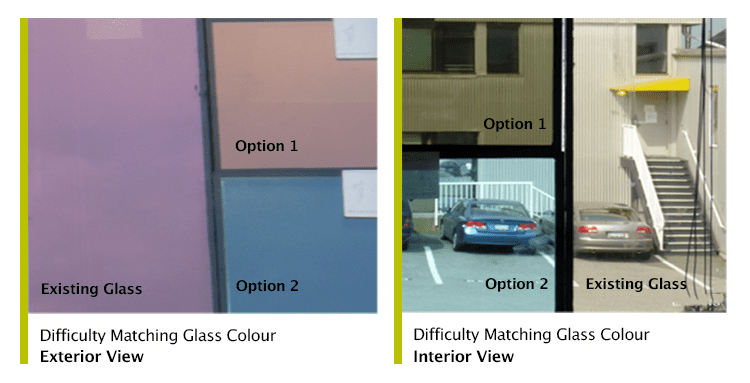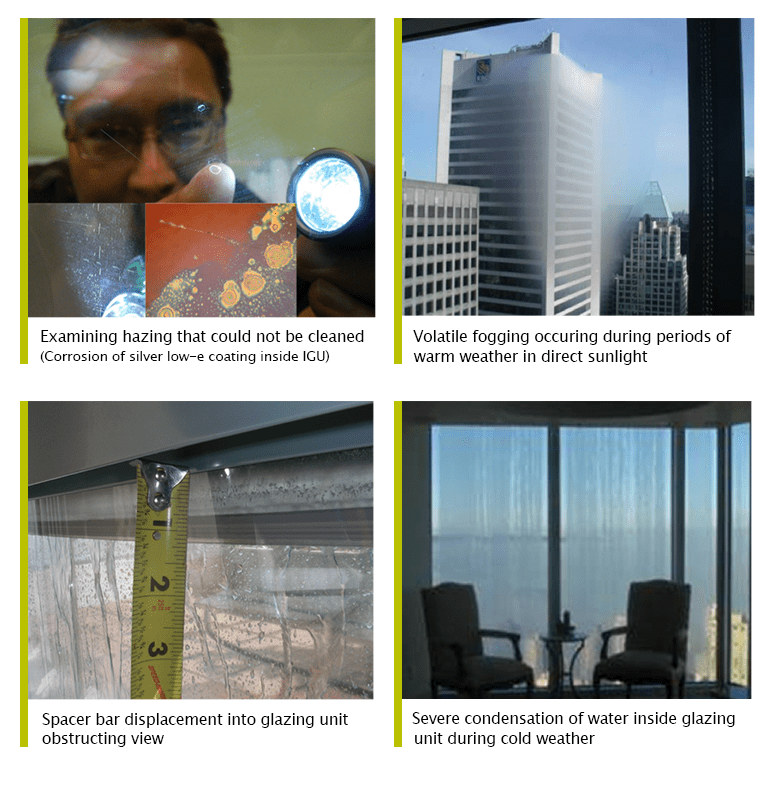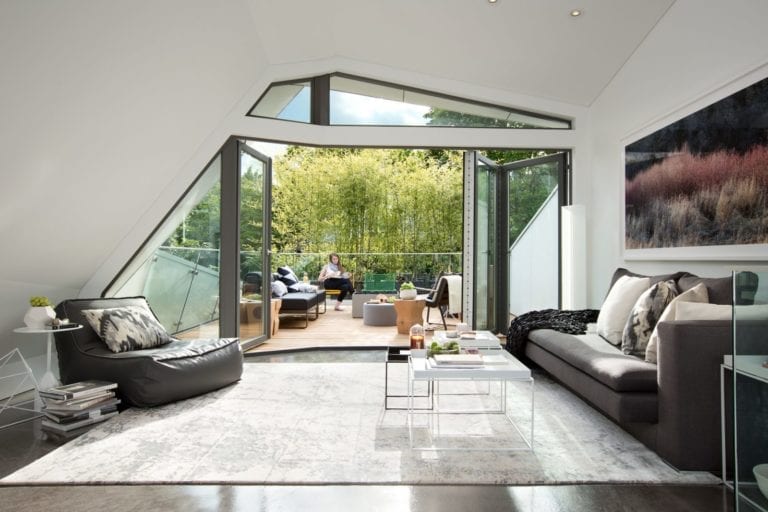Glass towers are all the rage these days.
Everyone wants big views and lots of sunlight. It’s only human nature! Today’s windows are more advanced, less expensive, and more efficient to install than ever before. As a result, entire building facades are being constructed of pre-manufactured glass and aluminum modules called unitized curtain wall.
These modern glazing systems provide high performance and durability when they’re manufactured and installed correctly, and require very little maintenance in the first 10 to 20 years in service. Unfortunately this is when the party often ends. Why? Well, let’s learn a little bit about the curtain walls typically used on high-rise buildings.
Unitized curtain wall generally consists of two main components:
- The glazing (glass)
- The aluminium framing system to hold it in place.
The glazing allows sunlight to enter the building and gives us the spectacular views we all crave. In addition, the glazing needs to:
- Provide insulation value during cold periods
- Prevent overheating and glare during sunny days
- Filter out unwanted street noise
- Prevent wind and occupant loads from breaking it
These qualities are achieved by creating an Insulated Glass Unit (IGU). IGUs use two to three layers of glass, specialized coatings such as silver on different surfaces, and various gasses such as argon between the layers of glass. These different layers of glass are then permanently held in place and sealed to prevent gasses from escaping and water from entering. If any of these elements fail, condensation can occur and impair the ability to see out of the building.
Existing buildings—when will replacement be required?
On existing buildings, IGUs started being used exclusively in the 70’s and 80’s. These IGUs have expected service lives of 15-40 years before the organic sealants holding the units together start to fail and allow water vapor to enter the units causing fogging and hazing to obstruct vision.
Replacement of glazing units is difficult because many of the glass colors and coatings that were common when these buildings were built are no longer available today and matching the visual appearance is an art that requires experience and mock-ups.
In addition, re-glazing a modern curtain wall typically needs to be done from the exterior, off of suspended stages and can approach the cost of the original glazing system on complicated buildings. Due to the extremely high cost of replacing glazing units on an existing building, it is critical for owners and managers of older buildings to have an understanding of when these costs will be required and if there is anything that can be done to extend the life of the existing glazing units.
New buildings—how do we guard against problems?
On new buildings there are an almost infinite combination of polymers, sealants, and metallic coatings that can be used to create an insulated glass unit. The glazing industry is evolving rapidly and every year many new products are introduced into the market to improve performance or reduce costs.
Unfortunately many of these combinations do not have long track records of use together on buildings as many of them are relatively new products. As a result, it is not uncommon to see complex interactions between various combinations, often causing problems on new buildings.
There are tests required by code that IGUs must undergo and certification programs such as the Insulated Glass Manufacturers Association (IGMA). However, not all manufacturers test all different combinations of sealants, coatings, and spacers, and even the formulations of these products can change from batch to batch without the manufacturer’s knowledge.
As a result, it is important to review the glazing system and IGU markup to ensure that they are adequately designed, and that all components are tested to perform initially and withstand the test of time.
What do we do if there is a problem?
When investigating insulated glass unit problems a visual review is first conducted to look for fogging, hazing caused by corrosion of coatings, or spacer bar displacement.
Once complete a sampling of units is tested using a device called a frost point tester to measure the amount of water inside the glazing units. Once the amount of water inside the units is known a mathematical model is used to predict the remaining life and predict the expected replacement costs over the next decade.
Most importantly, if there is evidence of premature failure, the construction and installation of the IGU is investigated further to try and develop an economical method of extending the remaining service life of the units that have not yet failed.
On older buildings cleaning weep holes in the aluminum framing members or installing exterior sealants to reduce the amount of water contacting the IGU are methods often used. On new buildings incompatible materials can often be separated and glazing installation problems repaired before failure of the unit occurs.
Summary
Insulated glazing units are one of the most valued components on a building from a comfort and enjoyment perspective. They are also one of the largest assets requiring cyclical renewals. Like checking the oil in your car, early diagnosis and action can extend the service life of the entire building enclosure system if problems are identified early and action taken to correct it. Unfortunately, it is more often the case that action is taken after failures have occurred and often this is an exercise in planning for replacement rather than extending service life. Being proactive and checking on the performance of the glazing system every 5 to 10 years is the best way to get the most life possible out of your all glass façade.




